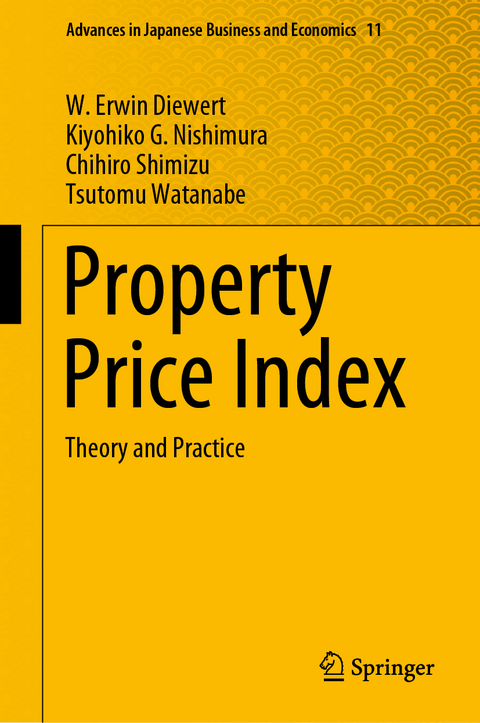
Property Price Index
Springer Verlag, Japan
978-4-431-55940-5 (ISBN)
The formation and collapse of property bubbles has had a profound impact on the economic administration of many nations. The property price bubble that began around the mid-1980s in Japan has been called the 20th century's biggest bubble. In its aftermath, the country faced a period of long-term economic stagnation dubbed the "lost decade." Sweden and the United States have also faced collapses of property bubbles in the 20th and early 21st centuries, respectively.
It has been pointed out that the "information gap" that existed between policy-making authorities and the property (including housing) and financial markets was a problem. In 2009, the IMF proposed the creation of a housing price index to the G20 in order to fill this information gap, and the proposal was adopted. Furthermore, in 2011, it was suggested that the next economic crisis would be caused by a bubble incommercial property prices, and it was decided to create a commercial property index as well.
This book provides practical examples of how the theory of property price indexes can be applied to the issues of property as a non-homogenous good and a technological and environmental change.
W. Erwin Diewert is a Professor in the Vancouver School of Economics at the University of British Columbia. Kiyohiko G. Nishimura is a Professor at the National Graduate Institute for Policy Studies (GRIPS) and Professor Emeritus and Distinguished Project Research Fellow of the Center for Advanced Research in Finance at the University of Tokyo. Chihiro Shimizu is a senior fellow professor of the Center for Spatial Information Science, The University of Tokyo, and Professor of Nihon University. Tsutomu Watanabe is a Professor in the Faculty of Economics at the University of Tokyo.
Part 1 Index Theory for Property Price Indexes.- Chapter 1 International Policy Discussion in Property Price Indices.- Chapter 2 Theoretical Background of Hedonic Measure and Repeat Sales Measure.- Part 2 Empirical Studies for RPPI using Tokyo Data.- Chapter 3 A Comparison of Alternative Approaches to Measuring House Price Inflation.- Chapter 4 Estimation of Property Price Index: Methodology and Data Sources.- Chapter 5 The SNA and Alternative Approaches to the Construction of CPPI.- Part 3. Application to the Official Statistics or Public Policy using RPPI.- Chapter 6 Measuring the Services of Durables and Owner Occupied Housing.- Chapter 7 New Estimates for the Price of Housing in the Japanese CPI.- Chapter 8 Imputed Rent for OOH in National Account.- Index.
| Erscheinungsdatum | 15.11.2019 |
|---|---|
| Reihe/Serie | Advances in Japanese Business and Economics ; 11 |
| Zusatzinfo | 31 Illustrations, color; 14 Illustrations, black and white; XV, 360 p. 45 illus., 31 illus. in color. |
| Verlagsort | Tokyo |
| Sprache | englisch |
| Maße | 155 x 235 mm |
| Themenwelt | Wirtschaft ► Betriebswirtschaft / Management ► Rechnungswesen / Bilanzen |
| Betriebswirtschaft / Management ► Spezielle Betriebswirtschaftslehre ► Immobilienwirtschaft | |
| Wirtschaft ► Volkswirtschaftslehre ► Finanzwissenschaft | |
| Wirtschaft ► Volkswirtschaftslehre ► Makroökonomie | |
| Schlagworte | Financial Crisis • Hedonic Regression Approaches • Index Number Theory • Measuring the services of Owner Occupied Housing • Residential Property Price Index |
| ISBN-10 | 4-431-55940-X / 443155940X |
| ISBN-13 | 978-4-431-55940-5 / 9784431559405 |
| Zustand | Neuware |
| Informationen gemäß Produktsicherheitsverordnung (GPSR) | |
| Haben Sie eine Frage zum Produkt? |
aus dem Bereich


